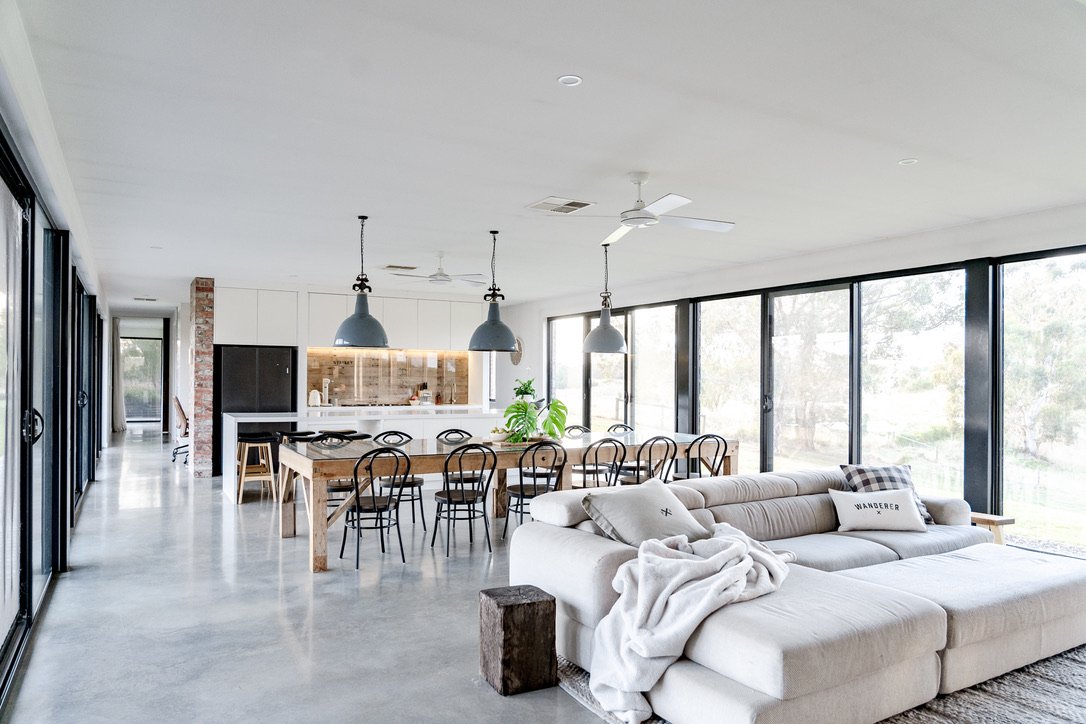Seven Essential Questions to Ask a Building Designer
I often get asked if I can recommend a good building designer, so I thought it might be helpful to put together a few quick questions you can ask potential drafties, building designers, or architects to help gauge if they are a good fit.
I know first-hand that selecting the right designer can feel overwhelming, and also how tricky it can be to find one who shares your vision and values around creating a home that’s sexy, affordable, comfortable AND good for the planet.
So, a great place to start is to take note of their responses to the questions below and then listen to your gut… it’s rarely wrong!
1. How much will changes to my design cost?
From personal experience, and also hundreds of conversations with the Booken tribe, a huge and often unexpected portion of the final cost of the design process can come from ‘changes’.
Changes are often billed out per hour, so make sure you understand how many changes are included in the initial quote and the rate at which changes are billed after that point.
It’s not unheard of for changes to end up costing as much, if not more, than the initial quote, meaning the overall cost of the design can be double the expected amount.
2. How long is the turnaround time for changes?
Time is money, particularly in a build and design process. The changes phase of a design is notorious for dragging out (sometimes over YEARS). This gets frustrating and time-consuming, particularly as one small change can take a month or more for designers to turn around (yes, I’m serious).
This problem is exacerbated when you’re unsure what you want from your new build or reno. The best suggestion is to be very very clear on what you want BEFORE you begin.
A little research and learning before engaging a professional goes a looooooong way. A great place to start is to download the free Sustainable Build Checklist here and shortcut the build and design process further by jumping into a workshop here.
3. What Climate Zone am I in?
This question signals you are serious about building a home designed for climate and that you’ve done your research. Hopefully, their eyes will light up when you ask this question, as they will be excited about working with a client interested in building a smart, efficient AND beautiful home.
4. What are the top three low-cost passive design principles I should include in my Zone?
Hopefully, they can answer this question in a heartbeat, although I strongly encourage you to research these simple principles yourself at yourhome.gov.au before conversing with a builder or designer.
5. What are they most passionate about when it comes to design?
This is a great question to determine if their values align with yours. The design process can become an uphill battle pretty quickly if you are not on the same page as your designer, and this question also helps you spot greenwashing, which unfortunately occurs far too regularly in the industry.
6. Does my budget align with my vision?
There is nothing worse than when an unsuspecting homeowner breezes through a design process and arrives at the end ready & raring to go with their gorgeous, bells-and-whistles dream house design, only to begin quoting and discover their design does NOT match their budget (sometimes to the tune of double their initial allocation of funds).
This is when they are faced with the dreaded decision of pushing ahead and significantly increasing the budget (i.e. bigger mortgage and extra financial pressure) or changing the plan. This is when the aforementioned ‘changes’ portion of the bill starts racking up, and the overall cost of the design process blows out.
One of the best ways to ensure this doesn’t happen (btw, it happens to the best of us, boy do I have some doozie stories to tell!) is to have a bullet-proof design brief BEFORE you engage your drafty, building designer or architect.
This can be as simple as a document you knock up yourself, or we provide you with all the tips, templates and resources you will need to pull together a killer design brief in Module 04 of the Sustainable Build Workshop.
7. What are the top three potential obstacles to my project, and what are the possible solutions?
Finding a practical and solution-focused designer is important because if obstacles and issues are not identified and rectified in the design process, your builder will be left to solve the problems on the fly during the build - all of which costs time and money (and likely a few grey hairs).
Selecting the right designer for your circumstances makes the build and design process much more enjoyable and, more importantly, less stressful; however, it doesn’t matter how wonderful your designer is, having enough knowledge under your belt to engage with them confidently will always speed things up, simplify the process, and save you big bucks.
Don’t stress, though; it’s not necessary to become a walking talking encyclopedia on good design or passive design principles; you only need to know enough to be dangerous (!!), that is, to be able to have robust conversations and to know what to fight for or prioritise in your build within your budget.
Ready to get serious about designing your own affordable, planet-friendly home? Our Simple Sustainable Build Workshops teach you exactly how to design or renovate a low-impact home — in ANY style or location, without breaking the bank.

